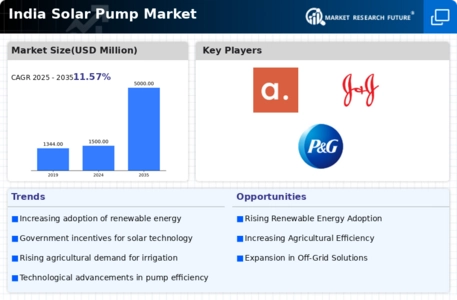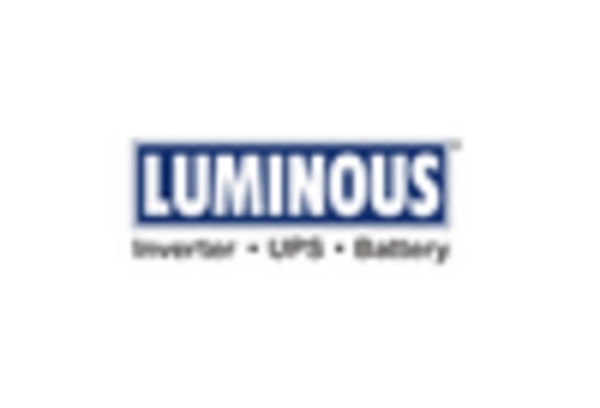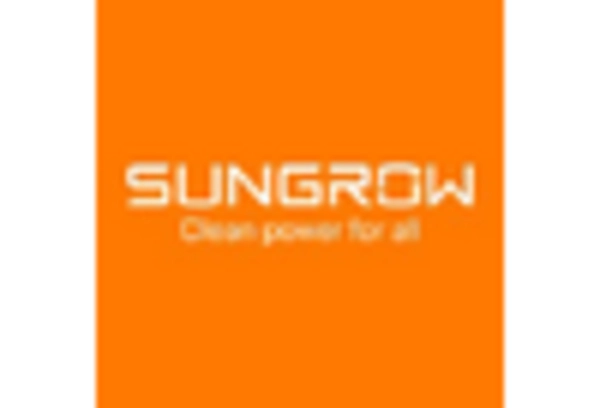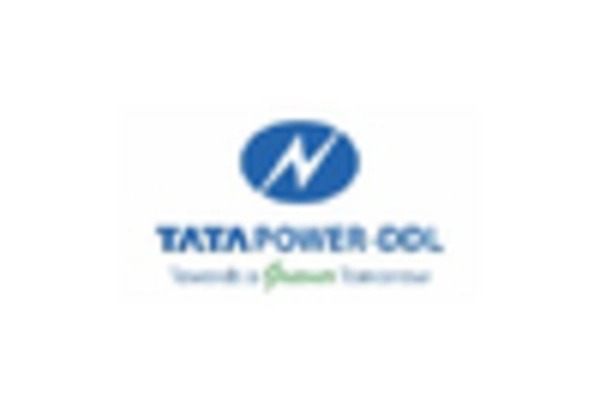Market Trends
Key Emerging Trends in the India Solar Pump Market
In the burgeoning landscape of the India Green Hydrogen Market, strategic positioning is crucial for companies to establish a strong presence, adapt to evolving energy trends, and outperform competitors. Technological innovation forms a foundational strategy, with companies investing in advanced electrolysis technologies, renewable energy integration, and efficient hydrogen production methods. Innovations such as high-efficiency electrolyzers, solar and wind-powered hydrogen production, and sustainable feedstock utilization position companies as leaders in providing green and clean hydrogen solutions, contributing significantly to capturing and maintaining a substantial market share.
Strategic collaborations and partnerships play a pivotal role in shaping market share positioning within the India Green Hydrogen Market. Aligning with government agencies, energy companies, or research institutions allows companies to pool resources and expertise, fostering a collaborative ecosystem for green hydrogen development. Such collaborations not only enhance project efficiency but also position companies as key contributors to India's transition towards green energy, contributing to an increased market share within the industry.
Adherence to stringent environmental and regulatory standards is a strategic imperative in the India Green Hydrogen Market. Companies that prioritize sustainable practices, invest in low-carbon technologies, and align with the national agenda for clean energy transition position themselves favorably. Compliance with regulations not only ensures market relevance but also builds trust with stakeholders, including investors and policymakers, influencing their choices and positively impacting market share.
Diversification and optimization of production methods and end-use applications are key strategies employed by companies in the India Green Hydrogen Market to enhance market share positioning. Offering a diversified range of green hydrogen applications, such as industrial feedstock, transportation fuel, or grid balancing, allows companies to address the diverse energy needs of the country. Additionally, optimizing production costs and efficiency contributes to competitiveness, optimizing overall market share.
Strategic pricing is an essential aspect of market share positioning in the India Green Hydrogen Market. Companies must balance competitive pricing with government incentives and operational costs to attract investors and end-users. Offering attractive pricing structures, innovative financing models, or long-term supply agreements helps companies gain a competitive edge and secure a larger market share. Strategic pricing strategies may also include collaborative pricing initiatives with government bodies or industry associations to align with national energy goals.
Geographic expansion and project deployment in key regions are strategic approaches to secure a competitive market share in the India Green Hydrogen industry. As India accelerates its focus on clean energy solutions, companies that strategically expand their presence in regions with high renewable energy potential and supportive regulatory frameworks can tap into new opportunities and enhance their market share. Adapting projects to local energy needs and collaborating with regional stakeholders is crucial in successfully penetrating diverse markets within the country.
Investment in research and development contributes significantly to market share positioning strategies in the India Green Hydrogen Market. Innovations in electrolysis technologies, renewable energy integration, and hydrogen storage solutions enable companies to stay ahead of industry trends and technological advancements. Being leaders in sustainable hydrogen solutions positions companies as key contributors to India's green energy transition, fostering investor confidence and positively influencing market share.
Customer relationship management and stakeholder engagement are strategic approaches to secure a competitive market share in the India Green Hydrogen sector. Establishing strong relationships with government bodies, local communities, and project investors fosters collaboration and support. Positive relationships with stakeholders are essential for navigating regulatory landscapes, gaining social acceptance, and attracting investment, all of which contribute to a favorable market share.
Strategic acquisitions and mergers also shape market share positioning in the India Green Hydrogen Market. Companies that acquire or merge with complementary businesses gain access to new technologies, expanded project portfolios, and broader customer bases. These strategic moves enable companies to strengthen their market presence, consolidate resources, and position themselves as influential players in India's green hydrogen landscape, enhancing overall market share.
In conclusion, market share positioning strategies in the India Green Hydrogen Market involve a comprehensive approach, encompassing technological innovation, strategic collaborations, regulatory compliance, portfolio diversification, pricing strategies, geographic expansion, research and development efforts, customer relationships, and strategic acquisitions. Successful implementation of these strategies allows companies to navigate the competitive landscape effectively, capture a significant market share, and establish a robust and sustainable position within India's dynamic transition towards green hydrogen.









Leave a Comment